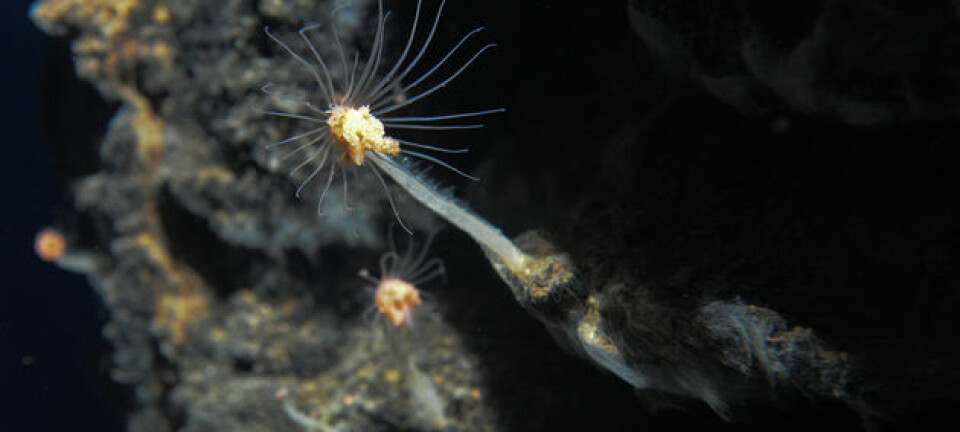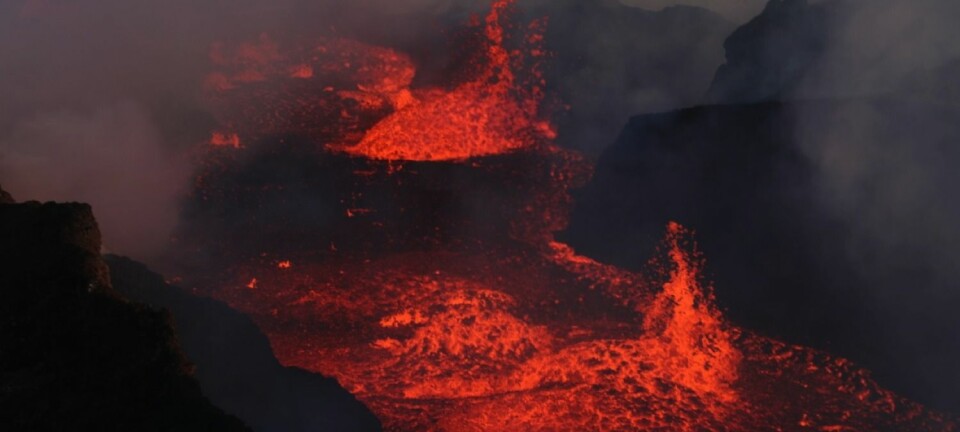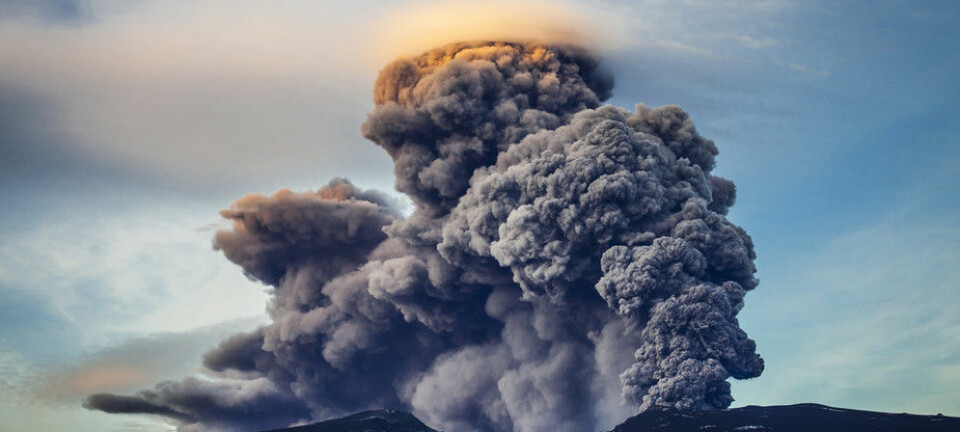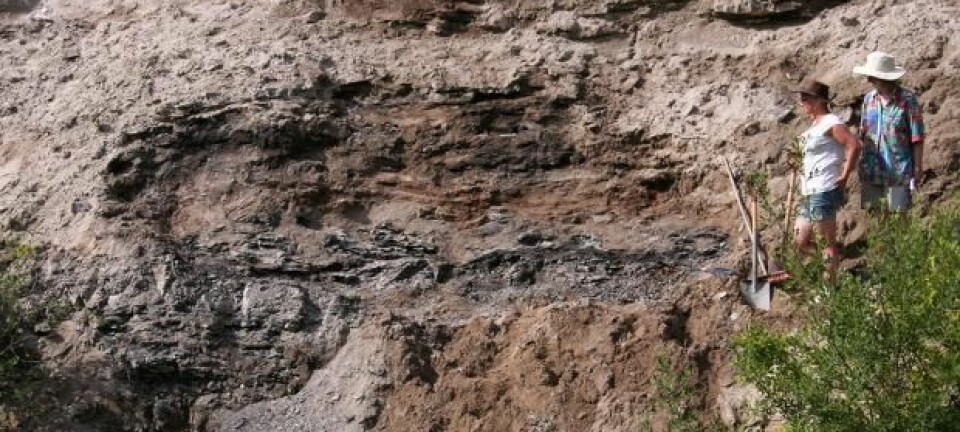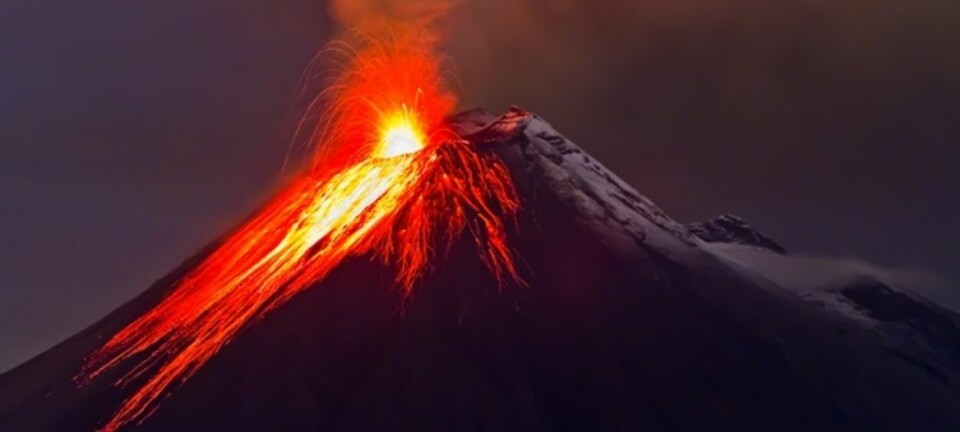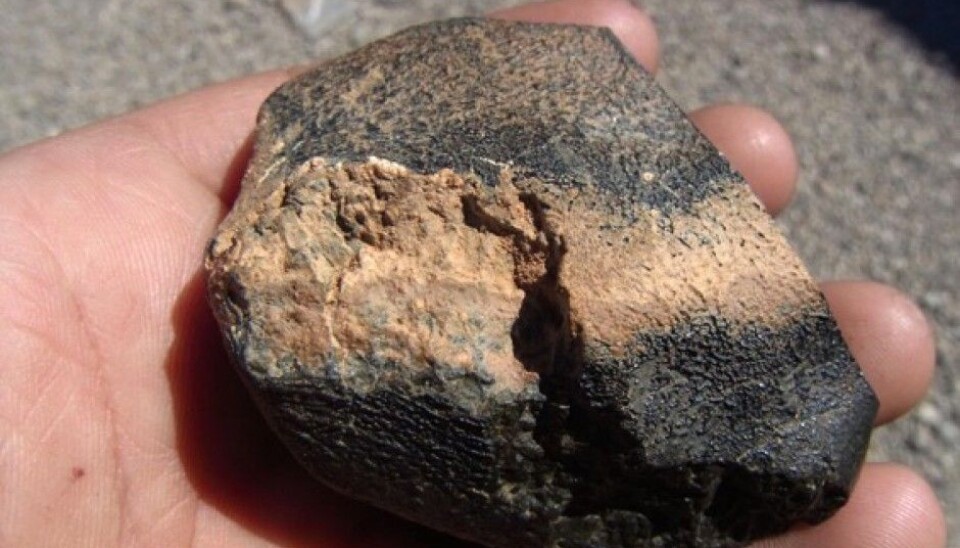
Mars volcano has been active for two billion years
A volcano on Mars has been active for two billion years, according to new analyses of a meteorite from the Red Planet.
In 2012, a little stone weighing about 200 grams was discovered in Algeria.
It turned out to be a meteorite from Mars, and the humble stone became the focal point of a new study, which was recently published in the journal Science Advances.
Analyses of the stone indicate that it was ejected from a volcano on Mars that was active for more than two billion years.
“When you look at the stone in your hand, it looks utterly normal. It was only when we studied it more closely that we discovered it was special and contained information about a chapter in Mars’s history that we know very little about,” says co-author Rasmus Andreasen from the Department of Geosciences, Aarhus University, Denmark.
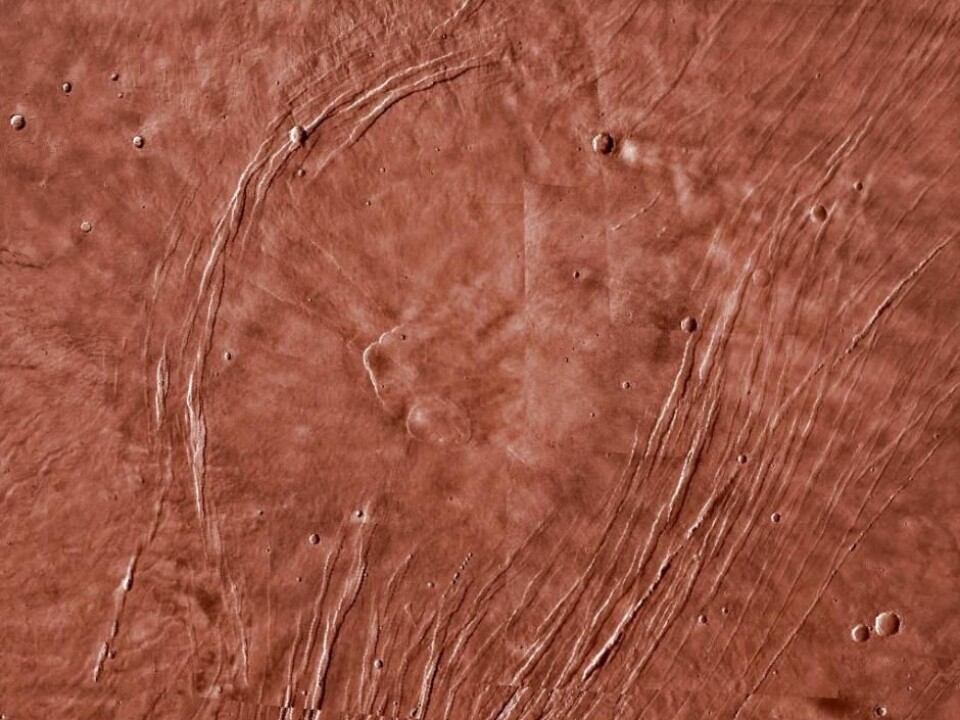
Read More: How volcanos collapse
Records long volcanic activity
The new meteorite suggests that the volcano on Mars had been erupting for longer than any other known volcano.
“It looks like the volcano has been active for more than two billion years. We’ve never seen this on Earth or any other place in the solar system,” says Andreasen.
The stone is thought to be 2.4 billion years old.
Read More: Volcanoes linked to cultural upheaval since early Roman times
Meteor peeled stone free from Mars
The stone was ripped free from the surface of the Red Planet during a large meteor impact, around 1.1 billion years ago.
The force of the impact flung the stone outside of Mars’s gravitational field, which is weaker than Earth’s, and it was flung into open space.
For thousands of years the stone floated through space before crashing to Earth. The stone was catalogued as Northwest Africa (NWA) 7635 and is classified as a Mars meteorite.
“What’s unique about this stone is that it is 2.4 billion years old. The other types of stone from Mars are significantly younger. They’re all between 150 and 600 million years old,” says Andreasen.
Read More: Mega volcanoes caused earthquakes in the UK and Denmark
Eleven meteorites from the same volcano
In total, scientists have found 11 meteorites of the same type as NWA 7635.
All 11 have the same chemical composition, which suggests that they come from the same area of Mars.
In the new study, scientists have studied how much cosmic radiation the meteorite has been exposed to.
This allowed them to estimate how long the stone has been exposed to cosmic rays and therefore estimate its age.
“The interesting thing is that all 11 stones left Mars’s atmosphere at exactly the same time, about 1.1 billion years ago. The most likely explanation is that all of the stones were sent into space by the same meteorite impact on Mars. If that is the case, then they may have come from the same volcano on Mars,” says Andreasen.
Read More: Were the Vikings scared of volcanoes?
Amazingly little geological development on Mars
Apart from the insights into the prolonged volcanic activity on Mars, the 11 meteorites reveal new information the geological development of the red planet.
“The interesting thing is that these young meteorites look almost the same as the older meteorites, when you look at the chemical composition. This means that they come from the same place in Mars’s mantle and have undergone the same development,” says Andreasen.
“The composition of material from the mantle is almost constant through the whole of Mars’s history. It shows that Mars has undergone amazingly little geological development since the earliest times, 4,5 billion years ago,” he says.
In contrast, tectonic plates on Earth are constantly pushing against each other and forcing magma to erupt through volcanoes bringing material up from the Earth’s mantle to the surface.
-------------
Read the full version of this article in Danish on Videnskab.dk
Translated by: Catherine Jex
